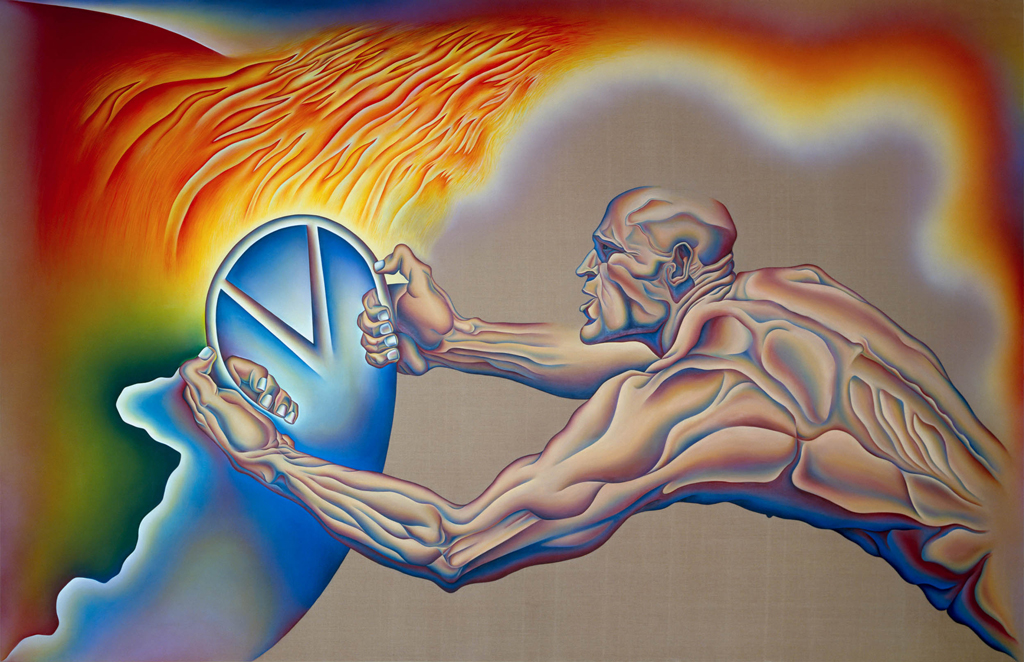[ad_1]
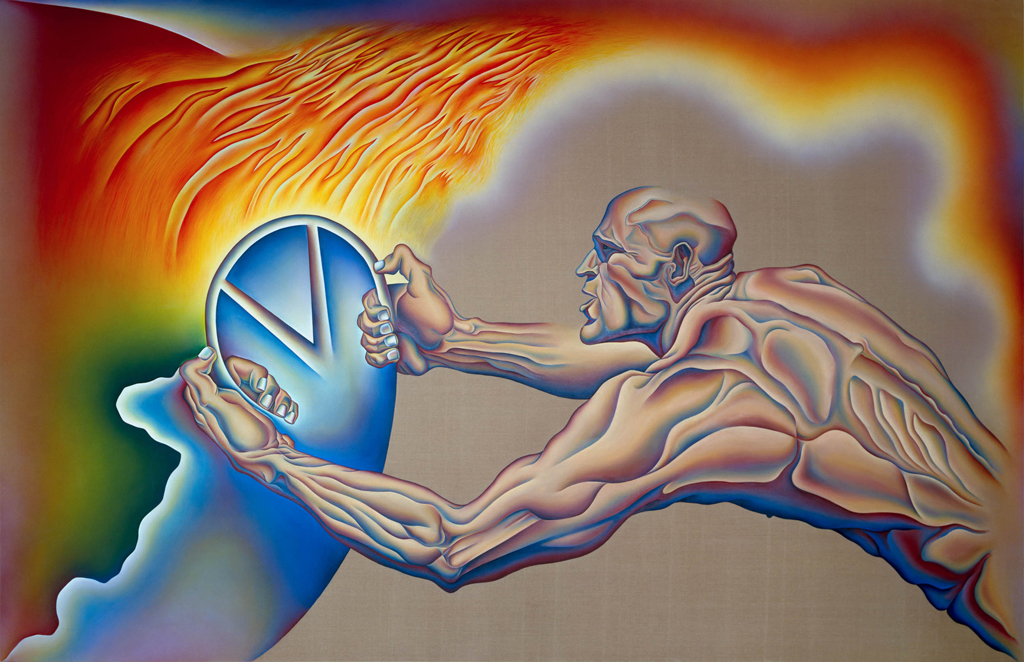
Judy Chicago, Driving the World to Destruction, from the series “PowerPlay,” 1985.
PHOTO: ©DONALD WOODMAN/ARTISTS RIGHTS SOCIETY (ARS), NEW YORK; ART: ©JUDY CHICAGO AND ARS, NY
This season brings long-overdue surveys for artists like Vija Celmins, Graciela Iturbide, Zilia Sánchez, Judy Chicago, Hans Hofmann, and Margaret Kilgallen, as well as the latest editions of major international exhibitions like the Kochi-Muziris Biennale and the Guangzhou Triennial. It’s also a winter of firsts. The National Museum of Modern and Contemporary Art, Korea will stage the biggest Marcel Duchamp show to date in Asia, with many of the objects on view having been drawn from the Philadelphia Museum of Art’s world-class collection of the artist’s work, while America will get its first-ever Sri Lankan art survey this December in the form of a 250-work exhibition at the Los Angeles County Museum of Art. Below, a look at the winter’s most promising shows.
NATIONAL
“Judy Chicago: A Reckoning”
Institute of Contemporary Art, Miami
December 4, 2018–April 21, 2019
Many know Chicago solely for The Dinner Party (1974–79), a landmark installation now permanently housed at the Brooklyn Museum that creates the setting for an imagined gathering of 39 historical female figures, from Boudica to Frida Kahlo. In the intervening years, Chicago has produced a formidable body of work, however, much of it dealing with the representation of women and rituals throughout art history. This full-career survey, which will bring together works from her early days as a feminist-art pioneer as well as more recent figurative paintings, includes Purple Poem (for Miami), a brand-new site-specific smoke piece. —Alex Greenberger
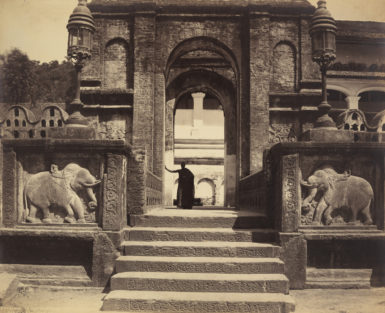
Scowen & Co., Entrance to the Buddhist Temple, Kandy (Ceylon), ca. 1880–90, albumen silver print.
©MUSEUM ASSOCIATES, LACMA/LOS ANGELES COUNTY MUSEUM OF ART, GIFT OF GLORIA KATZ AND WILLARD HUYCK
“The Jeweled Isle: Art from Sri Lanka”
Los Angeles County Museum of Art
December 9, 2018–June 23, 2019
No American museum has ever put on a survey of Sri Lankan art before, so LACMA is breaking new ground by bringing together 250 artworks spanning nearly 2,000 years of the country’s history. The show will feature precious decorative objects, 19th-century photographs depicting the South Asian country’s scenery and monuments. These, along with ivories and textiles, reflect Sri Lankan exchanges and interactions with European colonizers. The show draws on LACMA’s own rarely displayed collection of Sri Lankan art. —Claire Selvin
“Vija Celmins: To Fix the Image in Memory”
San Francisco Museum of Modern Art
December 15, 2018–March 31, 2019
Celmins is best known for her photorealistic paintings that depict natural environments—the sea, for instance, or the moon’s cratered surface—with a masterful level of detail that can at times border on abstraction. The artist’s first North American retrospective in 25 years will feature around 150 paintings, sculptures, and drawings. Next fall the exhibition travels to the Metropolitan Museum of Art’s Breuer building in New York—as it happens, the very same building where Celmins had a major traveling exhibition in 1992, when it was home to the Whitney Museum. Celmins’s celebrated seascapes will appear alongside her Pop-inflected paintings of consumer goods. —John Chiaverina
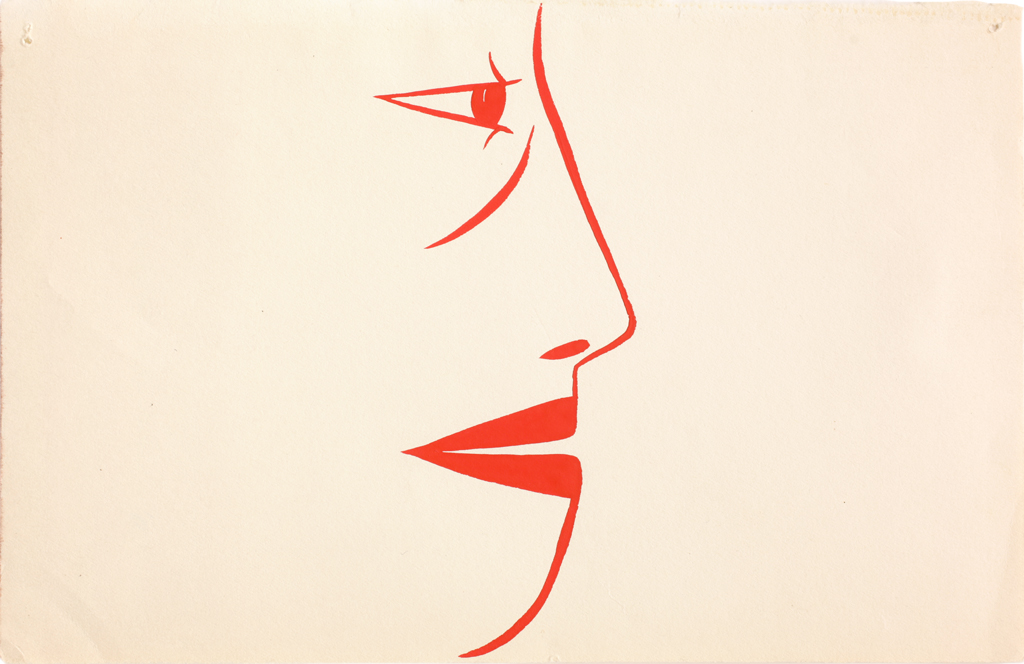
Margaret Kilgallen, Untitled, ca. 2000, acrylic on paper.
COURTESY RATIO 3
“Margaret Kilgallen: that’s where the beauty is.”
Aspen Art Museum, Colorado
January 12, 2019–June 16, 2019
Kilgallen, who died at age 33 in 2001, was of the main artists associated with the Mission School, a loose group based in California’s Bay Area known for its work made using humble materials that drew inspiration from all kinds of countercultural activity in 1990s America. This retrospective is the largest presentation of Kilgallen’s work since 2005, and it will use the artist’s exhibition history as a compass to explore her wide-ranging influences, which include the history of printmaking, American folk art, and feminist theory. The exhibition’s title is drawn from a quote from Kilgallen in which she discussed her disinterest in mechanical work and instead opted for something different and entirely handmade. —J.C.
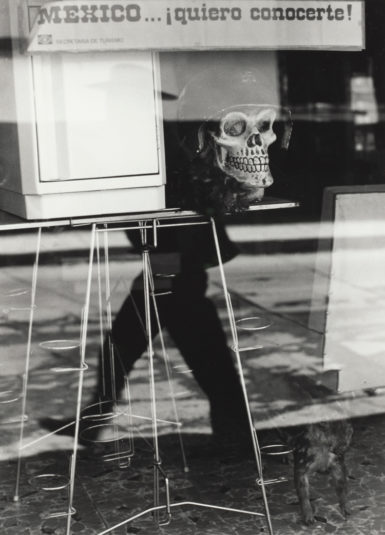
Graciela Iturbide, ¡México…Quiero Conocerte! (Mexico…I want to get to know you!), Chiapas, México, 1975, gelatin silver print.
©GRACIELA ITURBIDE/MUSEUM OF FINE ARTS, BOSTON, GIFT OF THE ARTIST
“Graciela Iturbide’s Mexico”
Museum of Fine Arts, Boston
January 19, 2019–May 12, 2019
Iturbide has long trained her lens on the contrasts she has observed in Mexico, with particular attention to seemingly opposing forces that coexist—ancient traditions and contemporary culture, life and death—and the rituals related to them. This exhibition will feature 125 photographs from throughout Iturbide’s five-decade career, among them her intimate documentary-style images of indigenous peoples in Mexico, including the Seri in the Sonora Desert and the women of the Juchitán people (part of the Zapotec culture) in Oaxaca, as well as recent work depicting items in Frida Kahlo’s bathroom and plants at the Oaxaca Ethnobotanical Gardens. —Maximilíano Durón
“Lucio Fontana: On the Threshold”
Met Breuer, New York
January 23, 2019–April 14, 2019
There are few more iconic photographs of an artist at work than the one of Fontana holding the knife he’d just used slash one of his paintings. His slashed paintings reflected the traumatic violence in Italy, where he was based, following World War II, yet they also served as dramatic experiments that questioned whether painting really was a two-dimensional medium at all. Those works rightfully garnered him acclaim, but he produced much more than that, making room-size light installations and abstract sculpture alongside his paintings. This retrospective aims to show the full scope of his work, and the exhibition will emphasize the role Fontana’s birth country, Argentina, played in his practice. —A.G.
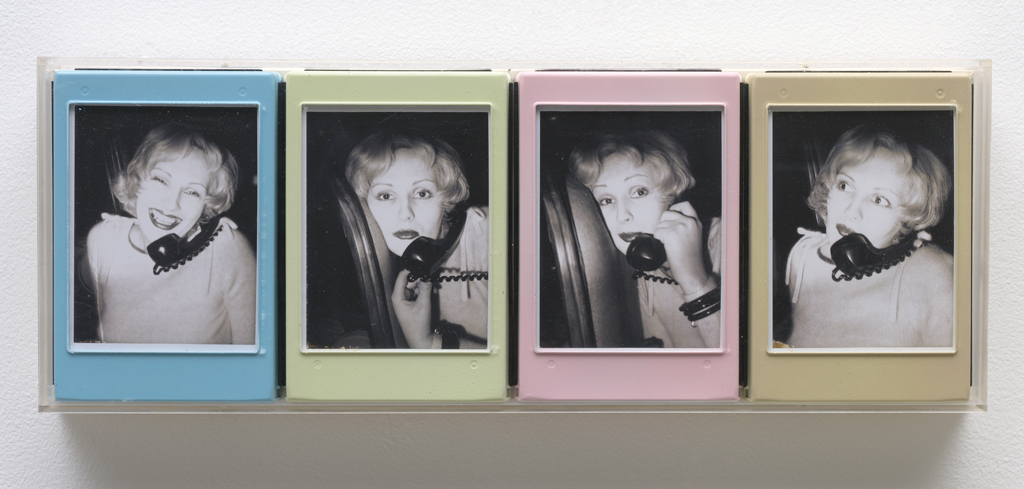
Robert Mapplethorpe, Candy Darling, 1973, four dye-diffusion transfer prints (Polaroid), in painted plastic mounts and acrylic frame.
©ROBERT MAPPLETHORPE FOUNDATION, USED BY PERMISSION/SOLOMON R. GUGGENHEIM MUSEUM, NEW YORK, GIFT OF THE ROBERT MAPPLETHORPE FOUNDATION
“Implicit Tensions: Mapplethorpe Now”
Guggenheim Museum, New York
January 25, 2019–July 10, 2019; July 24, 2019–January 5, 2020
The two-venue retrospective at the Getty Center and LACMA made 2016 the year of Robert Mapplethorpe in Los Angeles. This year Mapplethorpe mania comes to New York. To mark the 30th anniversary of the artist’s 1989 death from AIDS-related causes at the age of 42, the Guggenheim will present a yearlong, two-part exhibition of his work. Drawn primarily from a 1993 gift of 200 photographs from his estate, the show’s first part will bring together a variety of works—celebrity portraits, nudes, flowers, self-portraits, and images of the S&M community, as well as collages and mixed-media constructions. The second part will explore Mapplethorpe’s lasting influence on contemporary art, pairing his work with that of others in the museum’s collection, such as Rotimi Fani-Kayode, Lyle Ashton Harris, Paul Mpagi Sepuya, and Catherine Opie. —M.D.
“Liz Magor: BLOWOUT”
Carpenter Center for the Visual Arts, Cambridge, Massachusetts
January 30, 2019–March 24, 2019
Best known for her sculptures and assemblages of dissimilar materials, Magor has made a new body of work for this show incorporating Mylar, which is often used to create transparent commercial packaging. The Canadian artist introduced what she has called “agents” to her materials, causing them to slowly deteriorate in various ways. In April, the show, Magor’s first in a museum on America’s East Coast, will travel to the Renaissance Society in Chicago. —C.S.
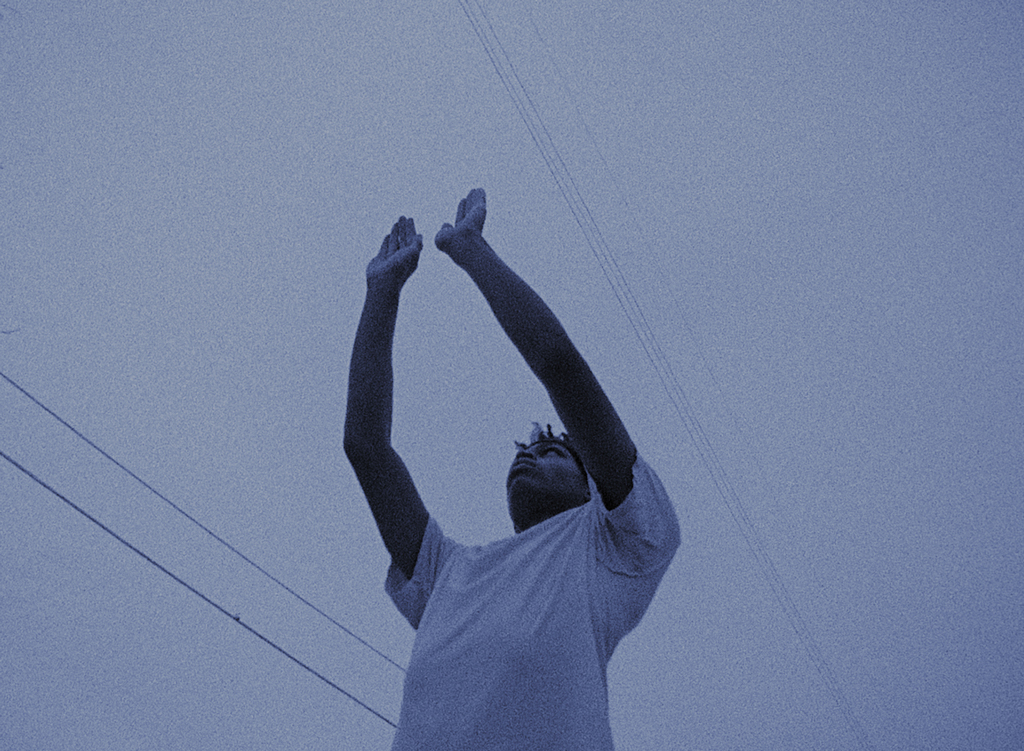
Kevin Jerome Everson, IFO (still), 2017, film.
©KEVIN JEROME EVERSON/COURTESY THE ARTIST, TRILOBITE-ARTS DAC, PICTURE PALACE PICTURES, AND THE INSTITUTE OF CONTEMPORARY ART AT THE UNIVERSITY OF PENNSYLVANIA
“Colored People Time: Mundane Futures”
Institute of Contemporary Art, Philadelphia
February 1, 2019–March 31, 2019
The three-show series “Colored People Time” will examine ways in which slavery and colonialism affect the present and the years to come. “Mundane Futures,” the series’ first exhibition, will feature work by Martine Syms, Kevin Jerome Everson, Aria Dean, and Dave McKenzie, with a focus on the future of black cultural production. The show will position Syms’s film The Mundane Afrofuturist Manifesto (2015), in which the artist reads a text about a new kind of black aesthetics for the 21st century, with two different historic texts: Sutton Griggs’s 1899 black dystopian novel Imperium in Imperio and the Black Panthers’ Ten-Point Program from 1972. “Mundane Futures” will be followed by installments called ”Quotidian Pasts” and “Banal Presents.” —C.S.
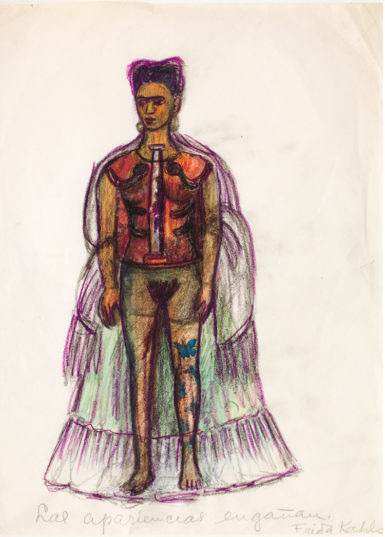
Frida Kahlo, Appearances Can Be Deceiving, n.d., charcoal and colored pencil on paper.
©2018 BANCO DE MÉXICO DIEGO RIVERA FRIDA KAHLO MUSEUMS TRUST, MEXICO, D.F. / ARTISTS RIGHTS SOCIETY (ARS), NEW YORK
“Frida Kahlo: Appearances Can Be Deceiving”
Brooklyn Museum, New York
February 8, 2019–May 12, 2019
In 2014, curator Julie Rodrigues Widholm told ARTnews that Kahlo has “been so overshadowed by her celebrity that her work has become lost.” Could this be the exhibition that finally saves the Mexican Surrealist painter from her own celebrity? For what is being billed as the largest Kahlo show in America in a decade, the Brooklyn Museum will home in on how the artist carefully crafted her identity. The show will include her clothes, personal possessions, and examples of contemporaneous films and propaganda, as well as works from the museum’s Mesoamerican holdings. If the show’s title is any proof, it will shed light on never-before-seen aspects of Kahlo, whose work frequently dealt with the complexities of being a female artist in the first half of the 20th century. —A.G.
“Maryam Jafri: I Drank the Kool-Aid But I Didn’t Inhale”
Institute of Contemporary Art, Los Angeles
February 10, 2018–June 23, 2019
How or why some consumer products fail to sell is the subject of Jafri’s 2014–15 series “Product Recall: An Index of Innovation,” a grouping of appropriated advertisements alongside ad copy and information that came with these goods. (One work in the series includes boxes from a line of frozen vegetables that were advertised using language that urged consumers not to buy them; the reasons why they never found their audience are obvious.) This show, Jafri’s first museum show in the U.S., will include a new version of that series, which the artist has called an “alternative history” of consumer culture. —A.G.
“Nari Ward: We the People”
New Museum, New York
February 13, 2019–May 26, 2019
Bringing together over 30 sculptures, paintings, videos, and installations, this show, Ward’s first New York museum survey, traces the artist’s 25-year career. The show will present some of Ward’s early sculptures—including the large-scale environments Amazing Grace (1993) and Hunger Cradle (1993)—made with materials the artist found in Harlem. The exhibition takes its name from Ward’s 2011 piece of the same title, in which the opening words of the preamble to the U.S. Constitution are rendered in hand-dyed shoelaces—a way of reclaiming the text, the artist has said. —C.S.
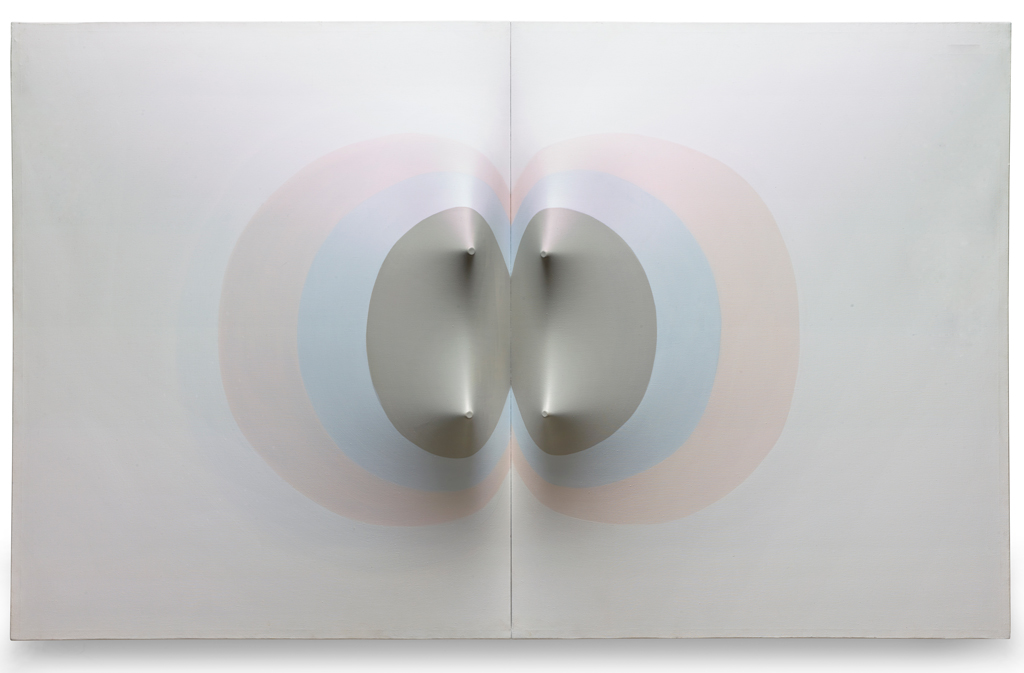
Zilia Sánchez, Amazonas (Amazons), from the series “Topologías eróticas” (Erotic Topologies), 1978, Acrylic on stretched canvas.
PRINCETON UNIVERSITY ART MUSEUM, NEW JERSEY
“Zilia Sánchez: Soy Isla (I Am an Island)”
The Phillips Collection, Washington, D.C.
February 16, 2019–May 19, 2019
One highlight of the 2017 Venice Biennale was a suite of shaped canvases by Cuban-born artist Zilia Sánchez. This show, Sánchez’s first-ever retrospective, will feature some 65 paintings, sculptures, sketches, and other pieces made over the course of her seven-decade career. The works often tackle metaphysical themes, employing geometries and imagery related to female mythological figures, including the Amazonians and Antigone. Sánchez has discussed her work in terms that refer to her alienation—both as a Latin American artist and as a woman—hence the show’s title. —Shirley Nwangwa
“Hans Hofmann: The Nature of Abstraction”
February 27, 2019–July 21, 2019
Berkeley Art Museum and Pacific Film Archive, California
It’s impossible to imagine a history of American abstract art in the postwar era without Hofmann, who taught many budding New York painters of the time—including Helen Frankenthaler and Lee Krasner—in the ways of color theory and modernist styles. Hofmann’s work, with its juxtaposed swatches of opposing colors and uneven textures, is lesser known than that of his students, so this show will bring together nearly 70 works to spotlight how he translated European techniques for American audiences. The show will travel in the fall to the Peabody Essex Museum in Salem, Massachusetts. —A.G.
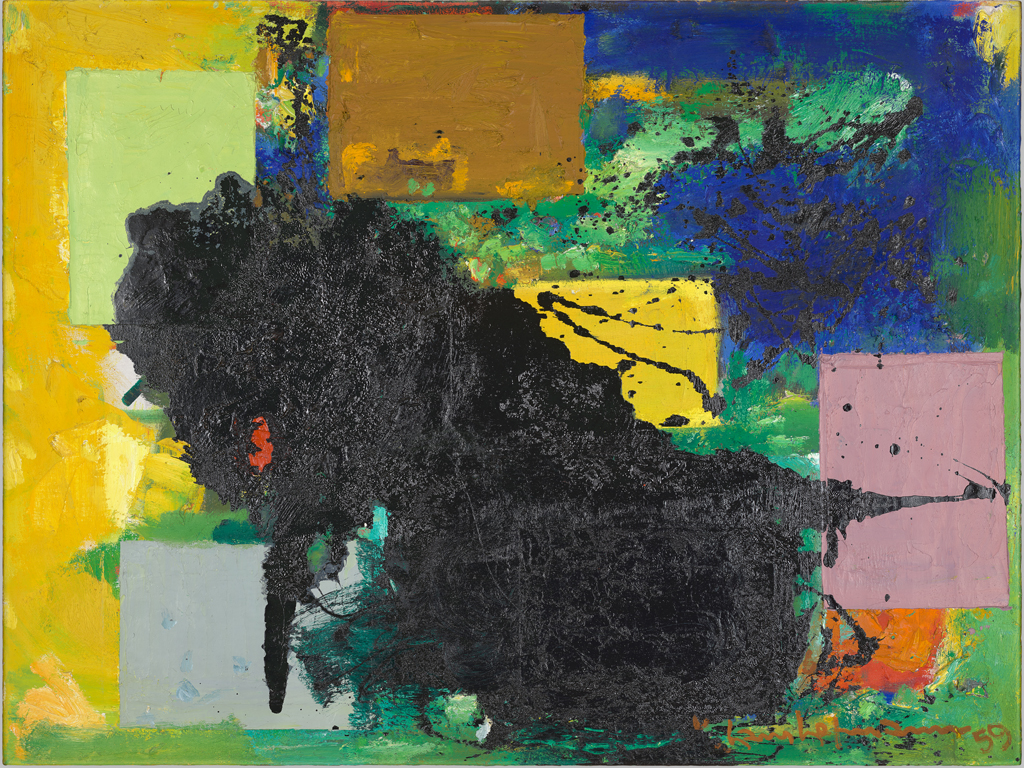
Hans Hofmann, The Vanquished, 1959, oil on canvas.
JONATHAN BLOOM/©THE REGENTS OF THE UNIVERSITY OF CALIFORNIA/UNIVERSITY OF CALIFORNIA BERKELEY ART MUSEUM AND PACIFIC FILM ARCHIVE, BEQUEST OF THE ARTIST
Jaume Plensa
Museu d’Art Contemporani de Barcelona
December 1, 2018–April 22, 2019
Curated by Ferran Barrenblit, this show will provide a comprehensive view of Plensa’s work from the 1980s to the present. The artist’s koanic work plays on the yin and yang of various phenomena—how darkness can accentuate light (and vice versa), and how silence can emphasize noise. Plensa’s fantastical, oversized sculptures, in which human forms appear to materialize from amalgams of text, have forged his reputation as one of Spain’s foremost artists. Because Plensa hails from Barcelona, the MACBA show will act as a homecoming of sorts. —Annie Armstrong
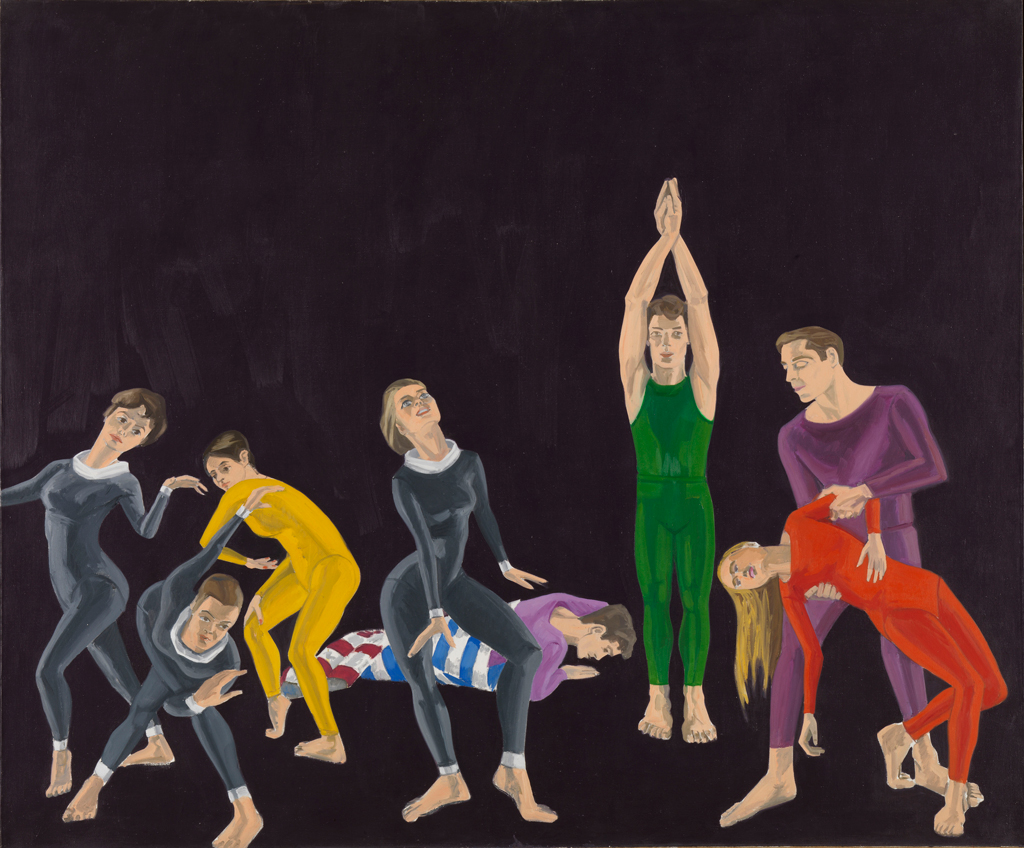
Alex Katz, Paul Taylor Dance Company, 1963–64, oil on canvas.
BAYERISCHE STAATSGEMÄLDESAMMLUNGEN, MUNICH/UDO AND ANETTE BRANDHORST COLLECTION
Alex Katz
Museum Brandhorst, Munich
December 6, 2018–April 22, 2019
“Sincere art is art that relies on subject matter to carry it,” Katz told Calvin Tomkins in a New Yorker profile earlier this year. “An honest painter is one who doesn’t paint very well.” Included in this show will be Katz’s stylized portraits of notables from the New York art world, among them the late dancer Paul Taylor, whom Katz painted as a stark white figure against an all-black background. As part of the show, alongside Katz’s portraits and landscapes, the museum will premiere a new documentary about the artist. —S.N.
“The Street: Where the World Is Made”
MAXXI, Rome
December 7, 2018–April 28, 2019
Street scenes are among the most pervasive subjects in art history, having appeared in everything from ancient Roman frescoes to Romare Bearden paintings. But what value do they have for artists today? That query formed the basis for this exhibition, curated by Hou Hanru. Included will be work by Gimhongsok, Francis Alÿs, and Yael Bartana, among many others. —A.G.
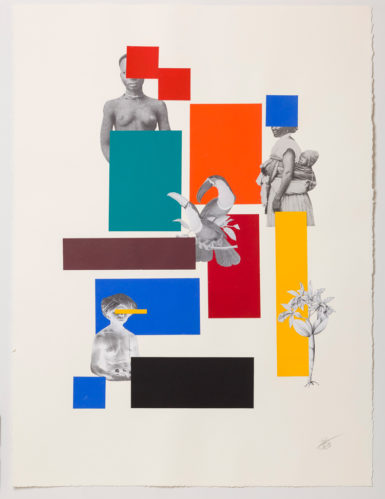
Rosana Paulino, Geometria à brasileira (Brazilian Geometry), 2018, digital printing, collage and monotype on paper.
PRIVATE COLLECTION
“Rosana Paulino: The Sewing of Memory”
Pinacoteca Estado de São Paulo
December 8, 2018–March 4, 2019
Concerns regarding the status of black women in Brazil run through much of Paulino’s output, which will be surveyed here in this 140-work show, the largest devoted to the artist in her home country. Spanning the last three decades, the show will feature works that recontextualize images created by European colonialists and scientific practitioners. Fabric will appear throughout these works; the artist has said that the material is a symbol of how men and women might be able to heal themselves following intense trauma. —A.A.
“Pedro Figari: African Nostalgias”
Museu de Arte de São Paulo
December 12, 2018–February 10, 2019
Figari’s work has rarely been surveyed despite his having long been considered one of the most notable modernists in Latin America. This show will span the full breadth of the Uruguayan artist’s career, with a focus on how his background as a human rights lawyer influenced his paintings. Many of his subjects were black Uruguayans, whom he depicted performing quotidian activities, such as dancing or honoring the dead. Though he transitioned from law to art late into his career, he produced some 4,000 Impressionism-inspired pictures in just 15 years; the MASP show will offer a sampler of them. —S.N.
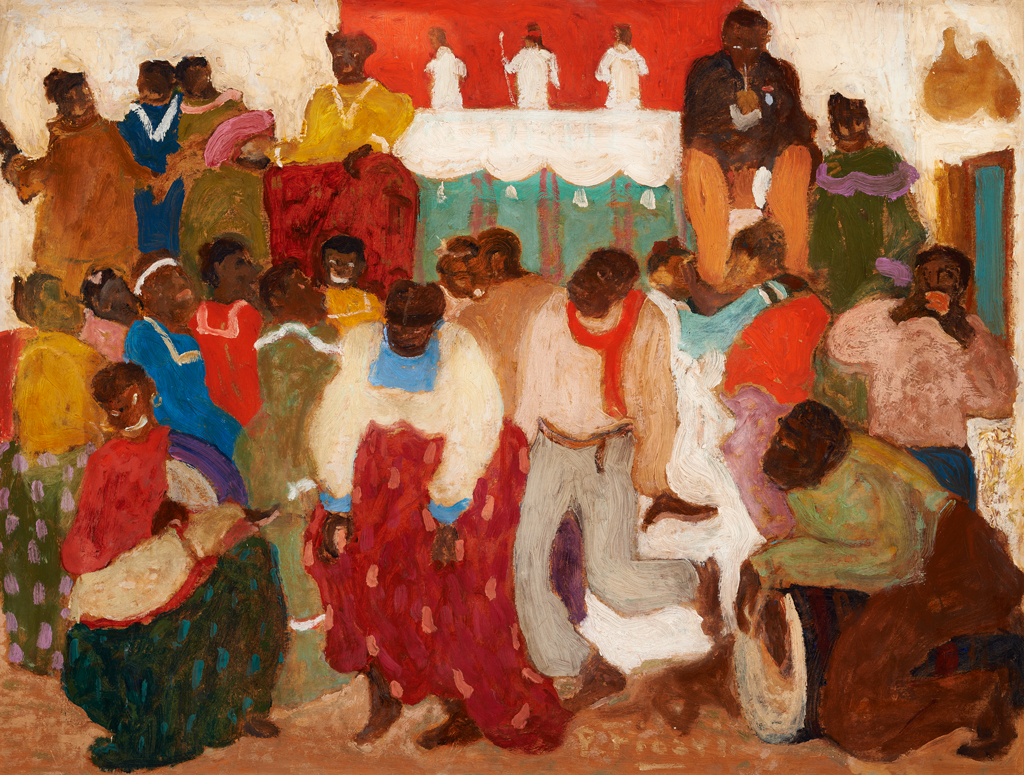
Pedro Figari, Candombe, n.d., oil on card.
MUSEO BLANES, MONTEVIDEO, URUGUAY
Kochi-Muziris Biennale
Various venues, Kochi and Kerala, India
December 12, 2018–March 29, 2019
For the fourth edition of this biennial, curated by artist Anita Dube, the Pavilion at Cabral Yard, which acts as the show’s central space, will host both physical and digital programming. In addition to talks, screenings, and performances, the venue will hold public displays of online content in a “web-integrated space.” Dube has called her show a “knowledge laboratory”; among the artists she has selected to participate are Barthélémy Toguo, the Guerrilla Girls, Shirin Neshat, and William Kentridge. —C.S.
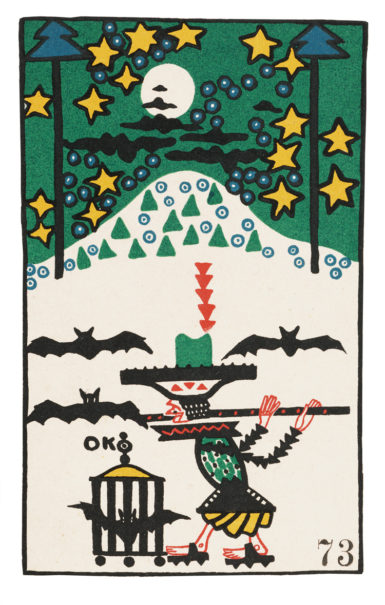
Oskar Kokoschka, Flute Player and Bats (Wiener Werkstätte postcard no. 73), 1907, color lithograph.
©2018 FONDATION OSKAR KOKOSCHKA AND PROLITTERIS, ZURICH/ALBERTINA, VIENNA
Oskar Kokoschka
Kunsthaus Zurich
December 14, 2018–March 10, 2019
Kokoschka created much of his energetic, sometimes humorous figurative work in direct opposition to the wave of state-sanctioned art that took hold throughout Europe during World War II. This has made him a peculiar figure in art history—the late Austrian artist is famous for his contribution to German Expressionist painting, for example, even though he intentionally kept some distance from the movement during its heyday, in the 1920s. This retrospective aims to better situate Kokoschka in the art world of his time; it includes around 200 works that cover the full spectrum of his output, from paintings to prints. —J.C.
Guangzhou Triennial
Guangdong Museum of Art, China
December 21, 2018–March 10, 2019
The sixth edition of the Guangzhou Triennial, titled “As We May Think: Feedforward,” will investigate ideas related to technology, machines, and humanity. The triennial will include an archival exhibition, curated by Wang Shaoqiang, the director of the Guangdong Museum of Art, as well as a three-part themed exhibition organized by Philipp Ziegler, Angelique Spaninks, and Zhang Ga. Work by 49 artists, including Gilberto Esparza, Tomás Saraceno, and Liu Wa, will be featured. —C.S.
“The Essential Duchamp”
National Museum of Modern and Contemporary Art, Korea, Seoul,
December 22, 2018–April 7, 2019
In honor of the 50th anniversary of the death of the pioneering conceptual artist Marcel Duchamp, the National Museum of Modern and Contemporary Art, Korea is mounting the most comprehensive exhibition of his work in the Asia-Pacific region to date. Comprising some 150 works, many of them sourced from the Philadelphia Museum of Art, the show will include the artist’s famous Fountain (1917/50) sculpture—a readymade constructed from a urinal tipped on its side—and other groundbreaking “readymades” alongside archival materials. There will also be a digital replication of Etant donnés (1946–66), the artist’s final major work. —J.C.
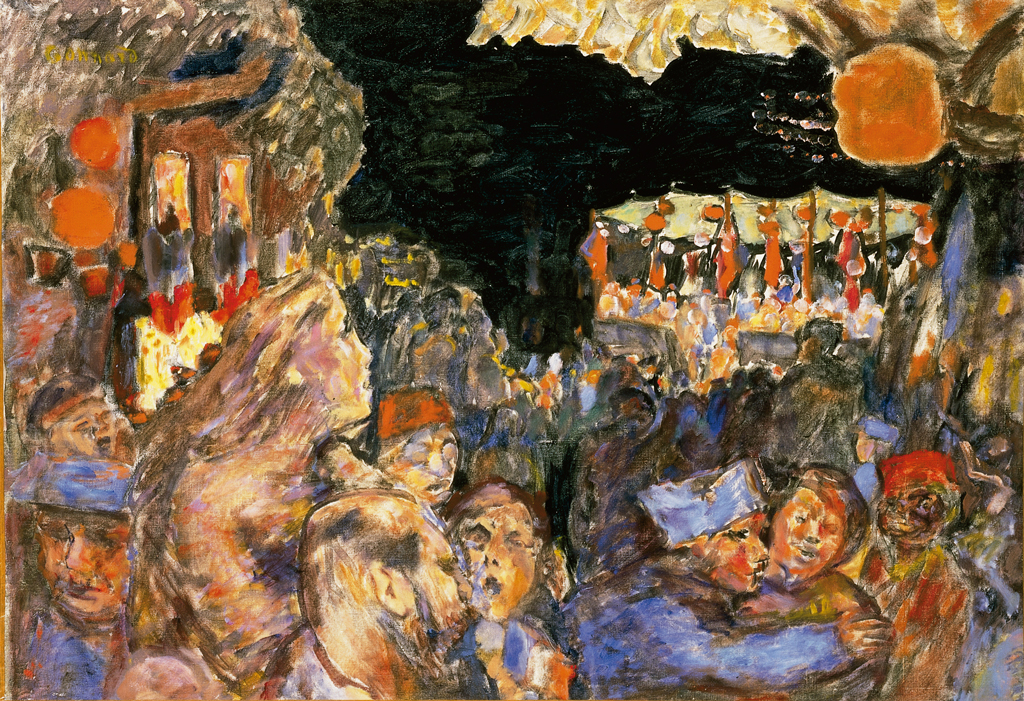
Pierre Bonnard, The Fourteenth of July, 1918, oil paint on canvas.
PRIVATE COLLECTION
“Pierre Bonnard: The Colour of Memory”
Tate Modern, London
January 23, 2019–May 6, 2019
Back in 2006, New York Times critic Michael Kimmelman waited in line for 20 minutes just to get to the front door of the Musée d’Art Moderne in Paris’s Pierre Bonnard retrospective. It was worth it, he wrote: “the show is sublime.” Now Bonnard is set to draw crowds at Tate Modern. Spanning nearly 40 years of the French artist’s career, this show will feature close to 100 works, and will highlight Bonnard’s expert use of brilliant color in his intimate, melancholy paintings. In his landscapes and scenes of domestic life, he evoked the passage of time through experiments in color. Included will be some of his most famous works, among them depictions of his wife, Marthe de Méligny, in various states of undress. —S.N.
Morag Keil
Institute of Contemporary Art, London
January 30, 2019–April 14, 2019
For her first major institutional show, the Scottish artist Morag Keil will present a grouping of new and existing works, all of them restructured specifically for this exhibition. Keil works in a variety of mediums, including film, installation, painting, and drawing, and often investigates how technological change, branding tactics, and media platforms affect our everyday lives. Included in the show will be a remodeled version of her 2016 video Passive Aggressive, which appropriates clips from animations, reality TV, and footage of motorcycling, and explores the blurred boundaries between fantasy, technology, and surveillance. —J.C.
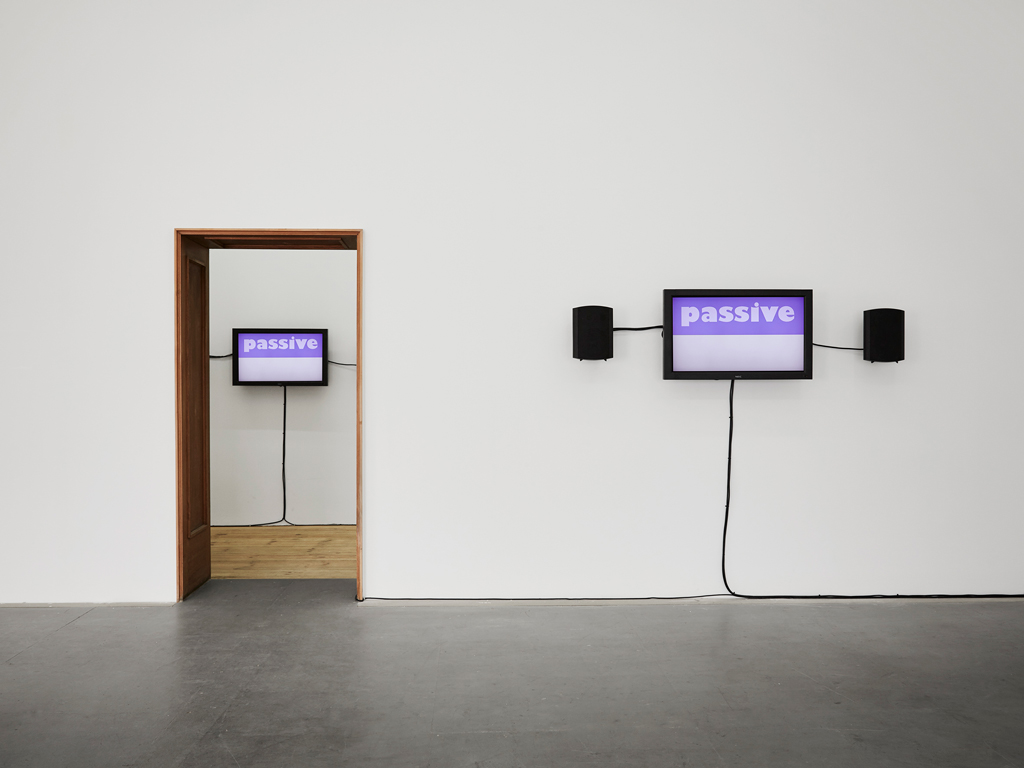
Morag Keil, passive aggressive, 2016, installation view at Eden Eden, Berlin.
HENRY TRUMBLE/COURTESY THE ARTIST AND GALERIE ISABELLA BORTOLOZZI, BERLIN
“Victor Vasarely: The Sharing of Forms”
Centre Pompidou, Paris
February 6, 2019–May 6, 2019
With recent major exhibitions of artists like Julio Le Parc and Bridget Riley, Op art is back in the spotlight. Widely regarded as the movement’s grandfather, Vasarely is finally getting his first retrospective in the city he called home after 1930. The show spans the full arc of the Hungarian-born artist’s career, starting in the 1930s with his proto-Op experiments. Also included will be examples of Vasarely’s eye-popping abstractions, which appear to warp before one’s eyes, and his later works, from the ’60s and ’70s, which responded to the look of advertising and mass media from the era. —A.A.
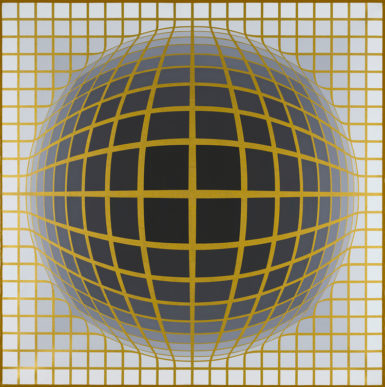
Victor Vasarely, Re.Na II A, 1968, oil and acrylic on canvas.
PHOTO: CENTRE POMPIDOU, MNAM-CCI/BERTRAND PREVOST/DIST. RMN-GP; ART: ©ADAGP, PARIS/COLLECTION CENTRE POMPIDOU, PARIS, GIFT OF THE ARTIST
“Roppongi Crossing 2019”
Mori Art Museum, Tokyo
February 9, 2019–May 26, 2019
The theme for the 2019 edition of “Roppongi Crossing”—a triennial held by the Mori Art Museum that offers something of a scene report on the Japanese contemporary art world—is “Connexions,” a reference to how artists are attempting to find points of unity in an increasingly fractured cultural and political landscape. More than 20 artists have been selected for this year’s edition. Their contributions will include Aono Fumiaki’s junk assemblages, ANREALAGE’s “form-changing clothes,” and Takekawa Nobuaki’s Cat Olympics, a sculpture that ponders the hype surrounding the 2020 Tokyo games through an absurdist feline lens. —J.C.
Bruno Gironcoli
Schirn Kunsthalle, Frankfurt
February 14, 2019–May 12, 2019
After years of relative obscurity, Gironcoli’s work has recently seen a revival, thanks to a major show of the late Austrian sculptor’s work earlier this year at the Museum Moderner Kunst Stiftung Ludwig in Vienna. Now the Schirn Kunsthalle will offer its own survey of Gironcoli’s metal sculptures, which resemble nightmarish versions of sci-fi machines. Their allusions to technology spiraling out of control have proven influential for young artists. The Schirn show will focus specifically on Gironcoli’s late works, from 1990s and 2000s. —S.N.

Mary Maggic, Housewives Making Drugs (still), 2017, video.
COURTESY THE ARTIST
“Producing Futures—An Exhibition on Post-Cyber-Feminisms”
Migros Museum für Gegenwartskunst, Zurich
February 16, 2019–May 12, 2019
Ever since 1991, when the collective VNS Matrix disseminated its Cyberfeminist Manifesto both on- and offline, artists have envisioned a number of ways technology might disrupt our relatively conservative understandings of gender binaries and norms. But what is the state of cyberfeminism today? With this show, the Migros Museum will survey artists concerned with digital technology’s impact on the body—and consider the relevance of cyberfeminism in the present. The show’s artist list includes Guan Xiao, Tabita Rezaire, Anicka Yi, Juliana Huxtable, Wu Tsang, and more. —A.G.
A version of this story originally appeared in the Winter 2019 issue of ARTnews on page 22 under the title “Editors’ Picks.”
[ad_2]
Source link

